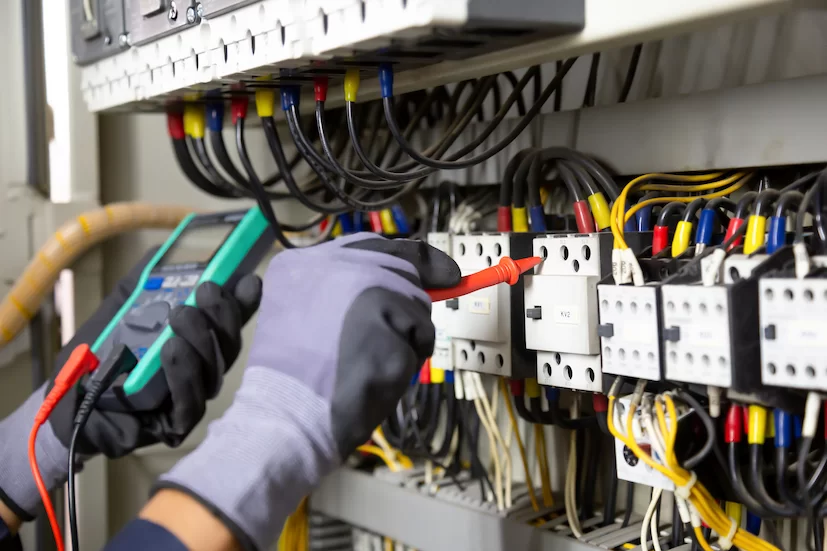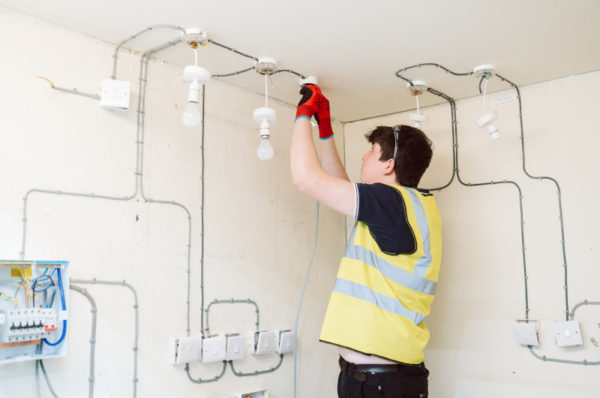The Ultimate Guide to Electrical Installation: Tips and Strategies for a Safe and Efficient Home Electrical Wiring System
In the realm of home maintenance, few elements are as crucial yet frequently forgotten as the electric circuitry system. Making sure a risk-free and reliable home circuitry configuration requires not only a basic understanding of electric concepts but likewise functional knowledge of installment techniques and upkeep protocols. From navigating the intricacies of cord links to fixing typical problems that might emerge, this guide intends to gear up property owners with the important suggestions and devices needed for a protected and energy-efficient electrical system. By exploring the nuances of electric safety and security steps and energy-saving methods, this comprehensive guide will shed light on the intricacies of home electrical wiring, encouraging people to organize their household's electric infrastructure.
Comprehending Electric Safety Actions
To make certain the safety of both people and residential property, understanding and executing appropriate electric safety and security measures is extremely important in any home circuitry job. It is crucial to carry out a comprehensive assessment of the electric system prior to starting any circuitry task to identify possible hazards or problems that need to be dealt with.
Moreover, utilizing the ideal tools and devices is necessary for preserving safety during electrical setups. Protected handwear covers, voltage testers, and safety eyewear are some of the standard safety and security equipment that ought to be used to stop electrical shocks or mishaps. It is likewise crucial to de-energize circuits prior to working on them and to identify all circuits and breakers plainly to avoid confusion.

Necessary Tools for Home Circuitry
Guaranteeing the appropriate application of electric precaution in home wiring jobs includes making use of a certain set of necessary tools designed to help with the setup process efficiently and safely. Several of the key devices needed for home wiring tasks include a voltage tester for checking live wires, wire strippers for getting rid of insulation from wires, a cable cutter for exactly cutting cables to size, a screwdriver established for protecting electric elements, electric tape for insulation and protecting links, a wire ripper for stripping cord sheathing, and a multimeter for gauging voltage, existing, and resistance. Furthermore, a drill with little bits is necessary for producing openings for electrical wiring and installing electrical boxes, while fish tapes or poles aid in drawing cords with conduits or wall surfaces. It is vital to purchase high-quality devices to guarantee precision, effectiveness, and safety throughout home electrical wiring tasks. By having the essential tools conveniently offered, property owners can efficiently browse the installment procedure and preserve a safe and secure electric system within their homes - BRE Automation Australia.
Step-by-Step Electric Setup Guide
Beginning an electric installation project requires thorough planning and adherence to safety guidelines. Prior to starting any kind of work, guarantee you have an in-depth strategy outlining the layout of the electric system, consisting of the placement of outlets, buttons, and components. Think about the power needs of each device to identify the suitable cord scale and breaker sizes.
The very first step in the setup process is to turn off the power supply to the location where you will certainly be functioning. Use a voltage tester to confirm that the circuits are de-energized before touching any kind of wires. Next, very carefully get rid of existing components or outlets and detach the wires.
When installing new circuitry, run cable televisions through walls and ceilings, safeguarding them in place with suitable installations. Comply with local building ordinance and company website manufacturer guidelines for correct cord installment and links. BRE Electrical. See to it to identify cables for very easy recognition and future upkeep

Troubleshooting Common Wiring Issues
Having finished the setup procedure as outlined in the previous subtopic, repairing typical electrical wiring problems is an essential ability for making sure the security and performance of your electric system. To resolve this, check and tighten up all cord connections in the affected components and buttons and redistribute the load on the circuit to balance the electric need. On a regular basis examining and promptly addressing these usual circuitry issues will certainly keep the safety and security and performance of your home electrical system.
Tips for Energy-Efficient Electric Solutions
For ideal power efficiency in electrical systems, executing smart methods and utilizing energy-saving modern technologies is vital. One essential suggestion for achieving an energy-efficient electrical system is to update to LED lighting. Proper insulation and sealing of windows, doors, and electrical outlets can also stop power loss, inevitably decreasing the workload on electric systems.
Verdict
Finally, implementing appropriate precaution, using important tools, following a detailed setup guide, click reference repairing usual issues, and including energy-efficient ideas are crucial for a risk-free and reliable home electrical wiring system. By sticking to these practices, property owners can make certain the durability and capability of their electric installments. It is essential to prioritize safety her comment is here and efficiency when it comes to electrical work in order to stop prospective hazards and to preserve a dependable electrical system in the home.